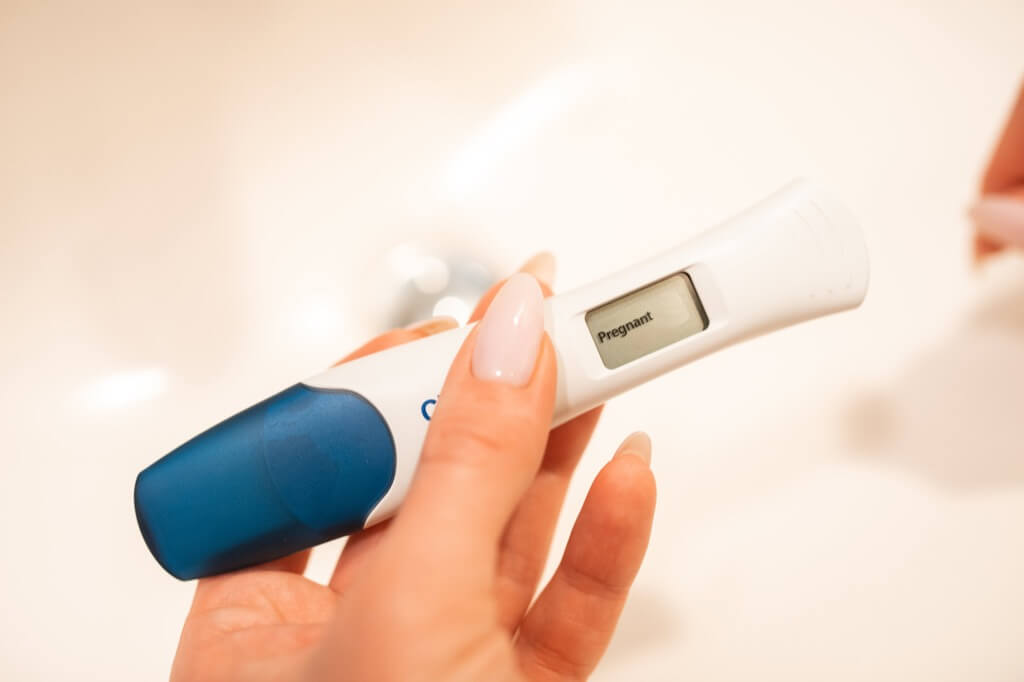Pregnancy tests. If you’re reading this, I hope it’s in the spirit of joyous anticipation and not a nerve-wracking curiosity.
Remarkably, the practice of using urine to detect pregnancy isn’t just a modern-day phenomenon. It dates back to 1350 BC if you can believe it! (See the “Historical Glimpse” section for more on this fascinating past.) The pregnancy tests as we know them today, however, made their debut in 1978, using the magic of human chorionic gonadotropin (hCG) antibodies. Curious why?
Post fertilization, when the fertilized egg attaches itself to the uterine wall, the formation of the placenta begins. It’s these specialized placental trophoblast cells that start producing hCG, typically around 6 days after implantation. This means the earliest you can expect a positive result is approximately 6 days post-intimate contact.
The science behind the test is the immunoassay – or the antibody test. Here, one antibody detects hCG, while a second, dye-labeled antibody reacts, producing a visible sign. Think of it as a scientific dance, where the presence of hCG allows the second antibody to display a visible marker. No dance? No baby.
Once the placenta begins its hCG production, it’s a rapid climb, doubling roughly every two days. This peak performance lasts until around weeks 11-12 of pregnancy, after which it takes a leisurely dip and maintains a steady low level throughout your pregnancy. It’s this early peak that makes it best to wait until after your first missed period to test, promising an impressive accuracy of 97-99%.
If you’re wary of home tests, fret not. The tests your doctor conducts aren’t too dissimilar. The only difference might be that they also test blood for hCG. While hCG levels in urine and blood typically correlate, certain scenarios might give a false positive in urine. But rest assured, dear reader, modern science has made pregnancy detection delightfully straightforward.
A Historical Glimpse
Would you believe that ancient Egyptians had their pregnancy tests? Women suspected to be pregnant would urinate on wheat and barley seeds. Barley sprouting indicated a baby boy, while sprouted wheat hinted at a baby girl. Though it might sound like old wives’ tales, a 1963 study found there was truth in the method. Pregnant women’s urine seemed to boost seed growth 70% of the time, believed to be due to increased estrogen levels.
It’s intriguing how hormones orchestrate many of our cellular functions. The hCG hormone, for instance, is a glycoprotein. By 1927, scientists had figured out a way to determine pregnancy using hCG levels in urine, albeit with unreliable results.
It wasn’t until e.p.t introduced the first home pregnancy test kit in the late 70s that things became simpler. While it was more hands-on than today’s tests and took longer, it boasted of impressive accuracy.
Today, immunoassays have a much broader application than just home pregnancy tests. From detecting HIV and hepatitis to monitoring drug levels, their uses span diverse areas. With over 2.5 billion tests sold annually worldwide, it’s a testament to the power and precision of this scientific tool.
Pros of Pregnancy Test Science
- Early Detection: As hCG production begins almost six days post-fertilization, early detection is possible. This can be especially helpful for those who are actively trying to conceive and want to ensure a healthy lifestyle as early as possible in their pregnancy.
- High Accuracy: Modern pregnancy tests boast an accuracy rate of between 97-99% when used post the first missed period. Such high precision ensures that individuals can trust the results, minimizing the chances of false alarms.
- Ease of Use: Today’s home pregnancy tests are simple and user-friendly. With the “pee-on-stick” model, it has become convenient for individuals to conduct the test in the privacy and comfort of their homes.
- Quick Results: Waiting for a result, especially one as significant as a pregnancy test, can be nerve-wracking. Modern tests offer results in a matter of minutes, reducing the anxious wait.
Cons of Pregnancy Test Science
- Potential for False Positives: While hCG is a significant indicator of pregnancy, certain scenarios might produce false positives in urine tests. This could be due to factors like specific medications, malfunctioning of the test, or even some medical conditions.
- Testing Too Early: Testing too soon, i.e., before the hCG levels have risen sufficiently, can lead to false negatives. It can give individuals a sense of relief or disappointment, only to discover a different result a few days later.
- Variable hCG Levels: The rate of increase in hCG can vary among women. This means that while one woman might get an accurate positive result just a day after her missed period, another might need to wait a few more days.
- Dependency on User Technique: The accuracy of home pregnancy tests depends largely on how well the user follows the instructions. A minor mistake can lead to misleading results.
Statistics On Pregnancy Tests
- Accuracy Rates: Over-the-counter pregnancy tests available to consumers typically boast an accuracy rate of over 99% when used on or after the day of the expected period. However, this rate can drop significantly if the test is taken too early, potentially resulting in a false negative.
- Testing Too Early: According to studies, about 10% of women can have low levels of hCG on the day of their expected period. This can lead to false-negative results if they test on this day. This number underscores the importance of timing when taking a test.
- South African Context: In South Africa, as per reports from the Department of Health and research institutions, there has been a push for improved sexual education and access to reproductive health services, including pregnancy tests. While exact statistics on false negatives are hard to pin down, the demand for accurate and affordable tests is on the rise due to the country’s focus on women’s health initiatives.
- Blood Test Reliability: Blood tests for pregnancy, which can be conducted at clinics or hospitals, can detect hCG levels as early as 6 to 8 days after ovulation. This makes them more accurate and reliable than many home urine tests, especially in the early stages of pregnancy.
- Factors Affecting Test Results: Variables such as the dilution of urine, the sensitivity of the test, and user error can influence the result of a home pregnancy test. Studies have shown that up to 5% of pregnancy test users misinterpret the results, potentially leading to false negatives or false positives.
Could You Still Be Pregnant? How To Deal With A Negative Test Result
Evaluate Your Testing Time
The timing of your test is crucial. If you’ve taken a pregnancy test too early, the hCG levels in your urine might not be detectable yet. Wait a few days and then test again, especially if it’s before the day of your expected period.
Check the Test’s Expiry Date
Always ensure that the pregnancy test you’re using hasn’t expired. Using an outdated test can affect its accuracy. Before using, inspect the packaging for any signs of damage or tampering.
Review the Instructions
It might sound basic, but make sure you’ve followed the test’s instructions to the letter. Even a minor deviation from the recommended steps can lead to a false negative.
Assess Medications and Health Conditions
Certain medications and health conditions might affect the outcome of your test. If you’re on medication or have been diagnosed with a particular condition, consult with your doctor about its potential impact on your pregnancy test results.
Monitor Your Symptoms
Even with a negative test, if you’re experiencing symptoms like nausea, fatigue, or missed periods, pay attention. Your body might be trying to tell you something. Note down any symptoms you observe and their frequency.
Consider a Blood Test
If you strongly believe you’re pregnant despite a negative urine test, consider getting a blood test done. Blood tests can detect pregnancy earlier than home tests and are more accurate.
Consult Your Healthcare Provider
If you still believe you might be pregnant or if you’re concerned about any symptoms you’re experiencing, it’s always a good idea to consult with a healthcare professional. They can offer advice tailored to your specific situation.
Stay Calm and Patient
This is an emotional time. Whether you’re hoping for a positive or a negative result, the uncertainty can be stressful. Remember to breathe, stay calm, and seek support from loved ones or professionals when needed.
FAQs for Post-Negative Test Concerns
Q: How soon can I take a pregnancy test?
A: While some tests claim to detect pregnancy days before a missed period, it’s generally advisable to wait until the day of your expected period for more accurate results.
Q: Can drinking lots of water before taking the test affect the result?
A: Yes. Diluted urine can potentially lead to a false negative. It’s best to take the test using your first-morning urine.
Q: How long should I wait to test again if I think the first test was wrong?
A: It’s recommended to wait 2-3 days before testing again, as this allows time for hCG levels to rise.
Remember, every individual and every pregnancy is unique. Trust your instincts, stay informed, and always consult with a healthcare provider when in doubt.




